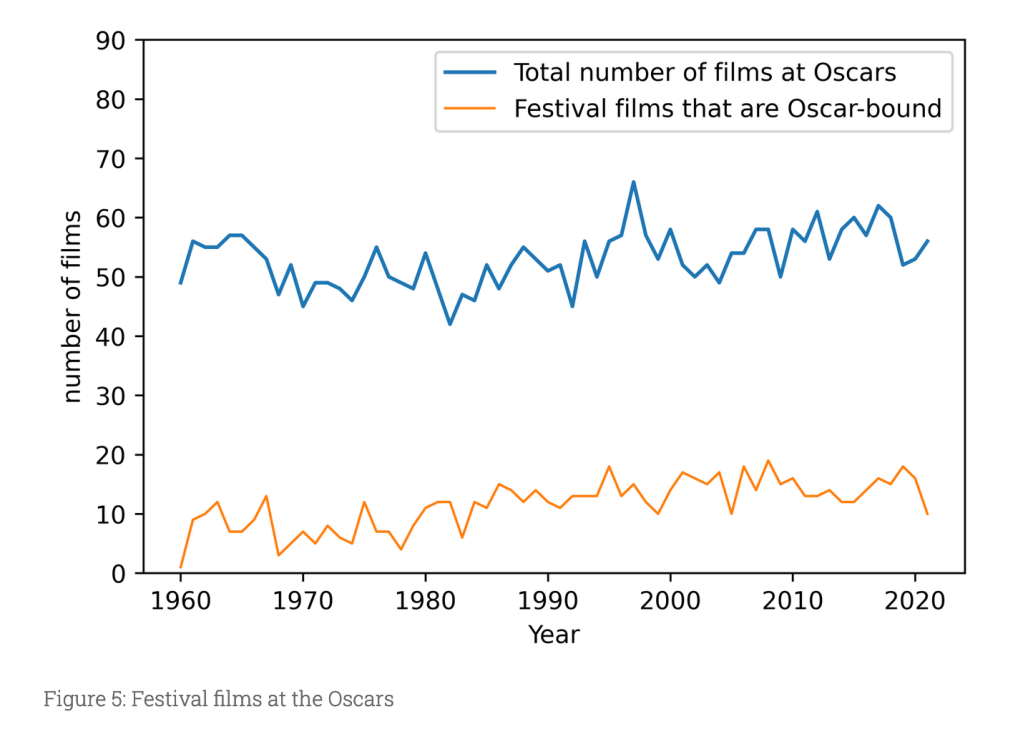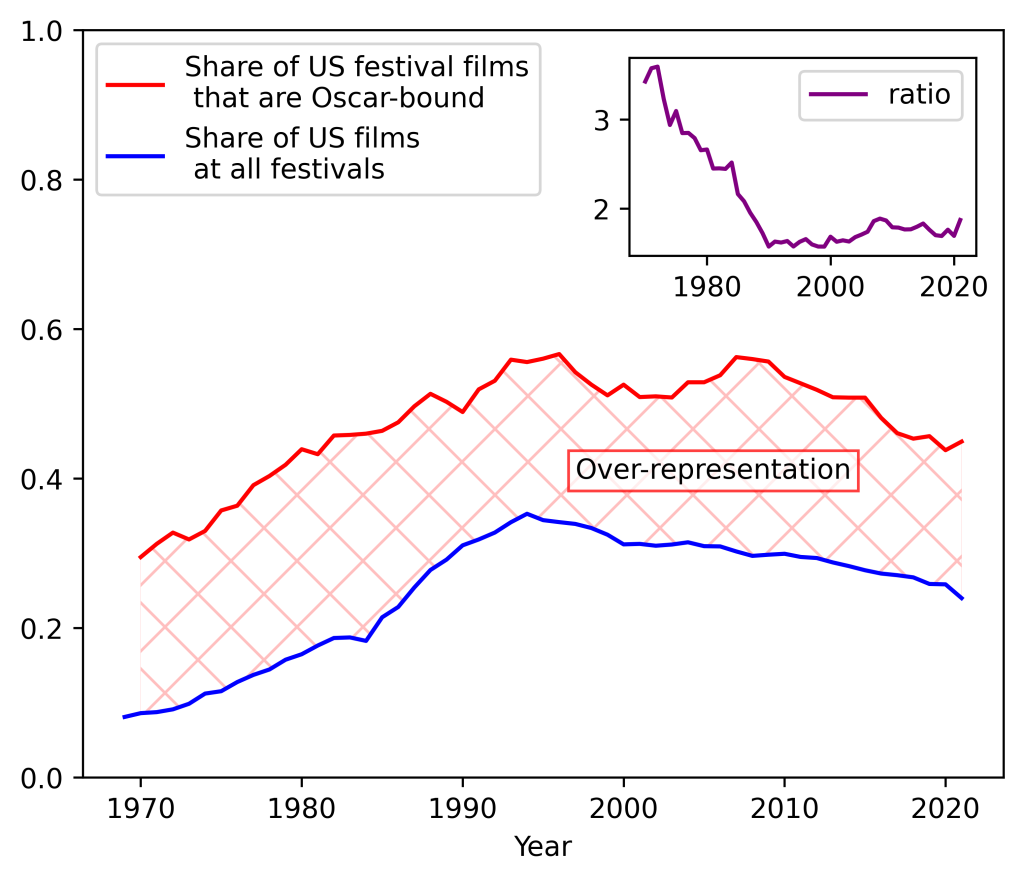
Do all roads lead to the Oscars? Part II
March 9, 2022
Originally published at notes on cinema
James McMahon
We ended the last post with a scenario of someone dreaming of their film going all the way to the Academy Awards. But I also waved away any dreamy smoke that clouds our imaginations about this outcome. As was shown in Figure 5, which is pictured below, the Academy will nominate around 55 films a year, but the film-festival road to the Oscars is narrow. Only around 10 of them “arrive” via the major film festivals of Berlin, Cannes, Chicago, Stockholm, Sundance, Toronto, Tokyo and Venice.

This post investigates the circumstances of film-festival films in more detail. The low number of film-festival films that are nominated for Academy Awards will feel even lower for those who believe the purpose of an international film festival is to showcase films without national biases, particularly for the United States, which already has a solid global audience. In short, American films at film festivals achieve a form of over-representation at the Oscars, whereby their frequency of getting Oscar nominations exceed their share of film festival representation.
American over-representation
Over-representation is a social-political issue where the composition of a group of people is biased in relation to the larger population from which the group comes. For example, let’s look at the number of women currently in Canadian Parliament. In the House of Commons for the 44th Canadian Parliament, 30.5% of the members are women. Conversely, men have 69.5% of the seats. In 2021, men in Canada accounted for roughly 49.7% of the general population. This means the ratio of over-representation of men in Canadian parliament, relative to the general Canadian population, is 69.5/49.7 or 1.39. Is this high? The significance of over-representation changes with context and the social impact of bias. Trends in over-representation are, in my opinion, better measures because they indicate how the same bias is moving over time. For instance, Canada’s 32nd Parliament from 1980 to 1984 can act as a measure of comparison to the 44th. 94.4% of 32nd Parliament were men, which gives us a ratio of 1.88 (94.4/50).
In terms of getting to the Oscars, we want to investigate if American films are over-represented in the film festival path. Over-representation occurs, in this case, when the share of American films going from film festivals to the Oscars is greater than the share of American films at all of the film festivals. The latter is our general population.
IMDb provides the data we need. Each film has a list of countries associated with its production. A country can appear because one of its firms or institutions provided financing, or because the government offered tax breaks for film production. Some films have one country listed, such as the United States or Australia, and other films have seemingly cosmopolitan lists that span multiple continents.
Figure 1 presents the results. For each year, I calculate the percent shares of films that have “United States” listed in their country information. The measure is not distinguishing where the United States appears in the list — for Hollywood films, the United States appears first in the country data. Figure 1 demonstrates the persistence of American over-representation in terms of films going to major film festivals and then going to the Oscars.

Source: IMDb
If the films that travel from film festivals are predominantly American, what countries or regions of the world are under-represented? This is a harder question to answer because film festivals are, taken together, a small group within the larger world of cinema, which has hundreds of films that never compete at major film festivals. Thus, some countries are under-represented by the gatekeeping of these film festivals — to say nothing about the Academy Awards.
A simpler comparison involves looking at the countries listed with films at the Oscars and those listed for films at the major film festivals. Figure 2 shows two maps, each plotting the percent share of each country involved from 1995 to 2020. The major film festivals I have been studying have a Western bias; yet, the Academy Awards have a stronger one. The share of the United States is above 25 percent at the Oscars, its next biggest country is America’s Anglo cousin, Great Britain, and South America and Africa have lost chunks of shares that were already too low in terms of diverse representations in cinema.


